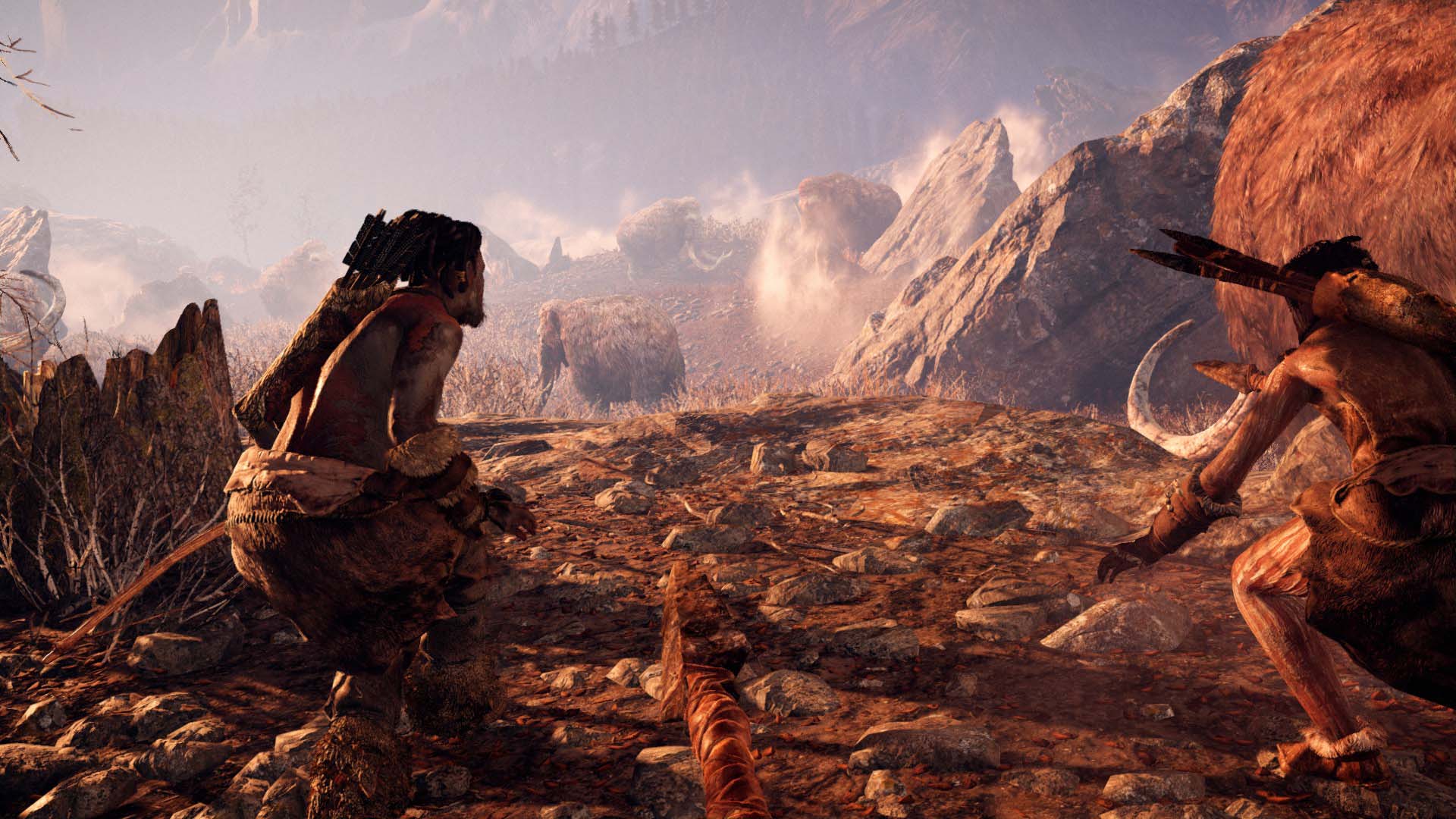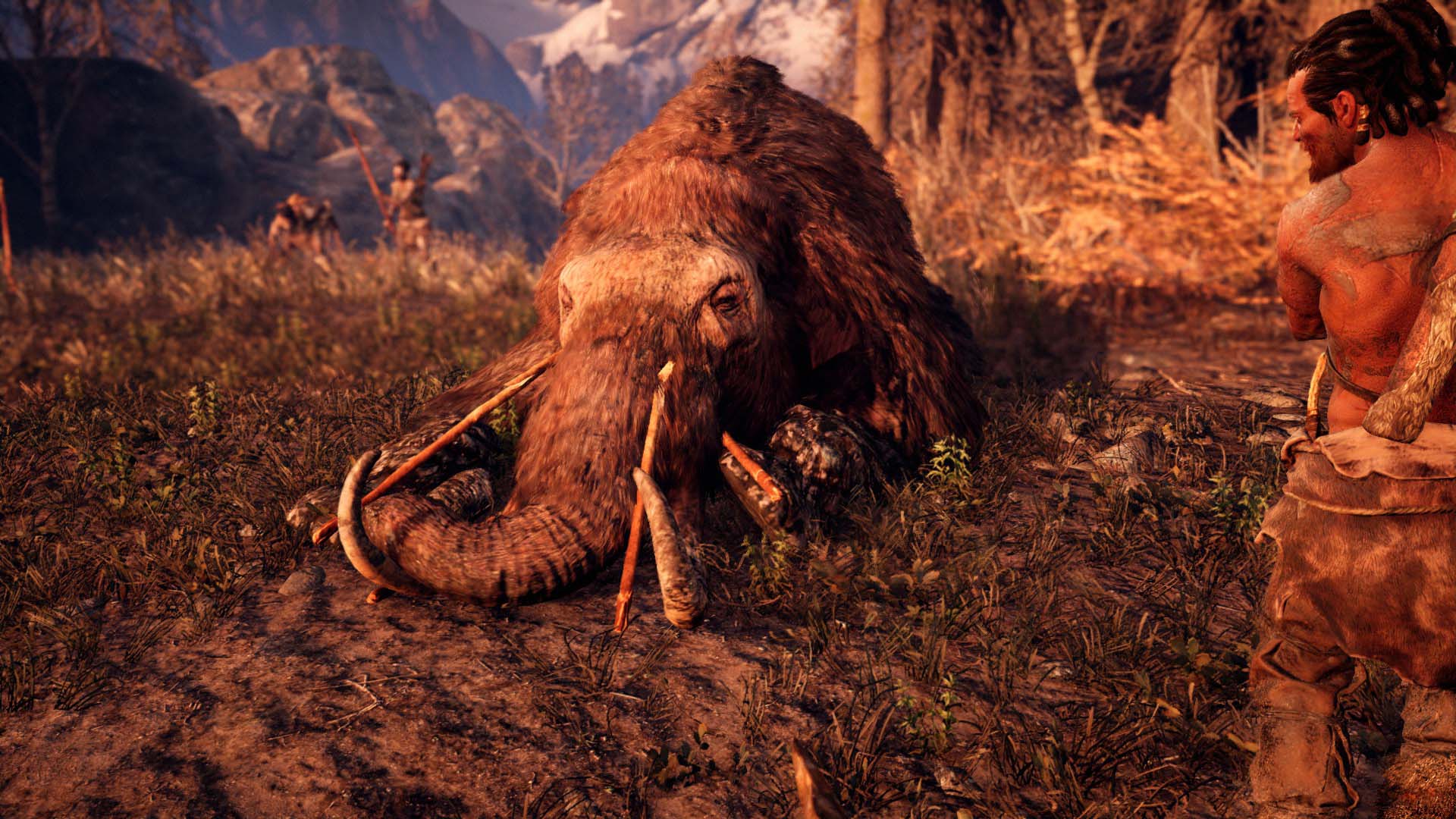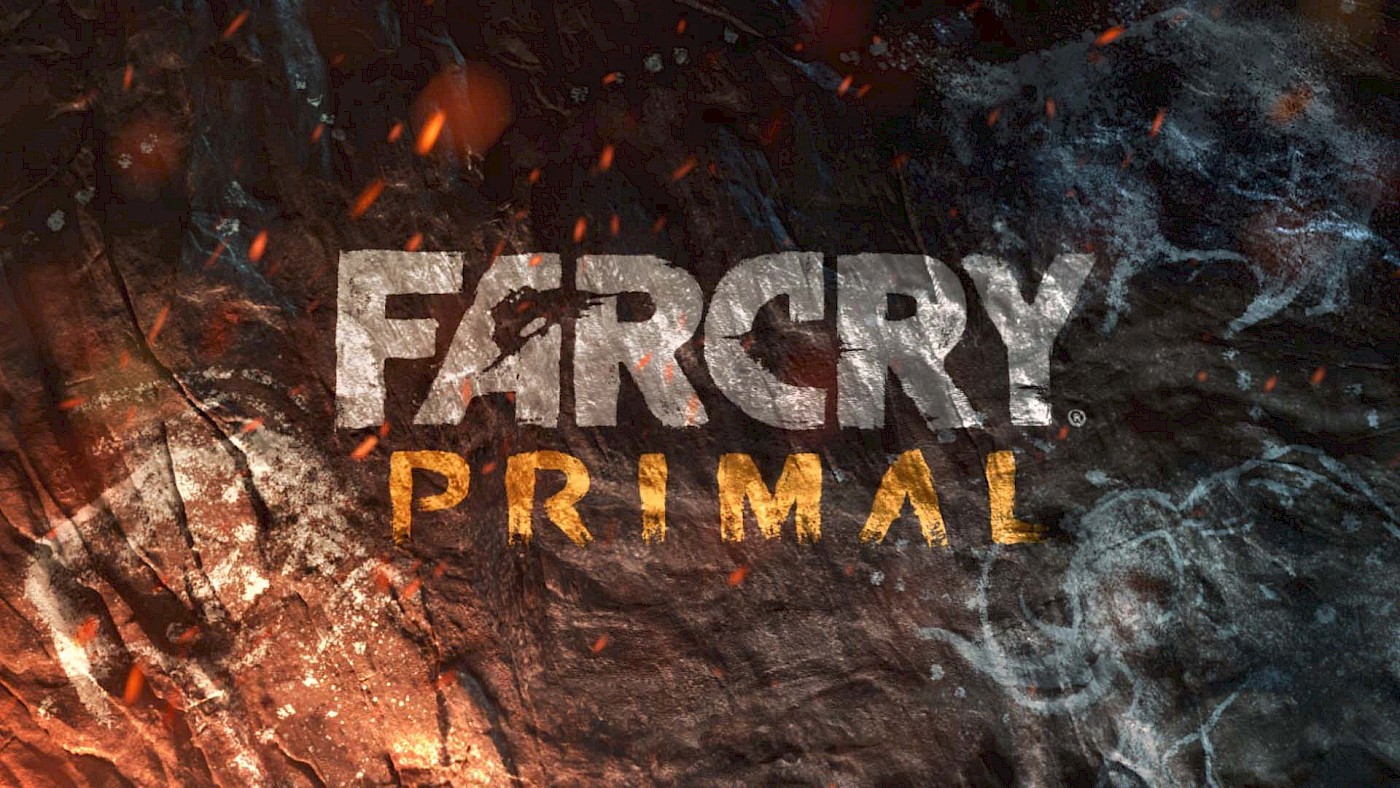There have been many games in the Far Cry series, but the latest entry caught my eye for an obvious reason: Far Cry Primal switches the contemporary setting for the year 10,000 BC. That’s right. This is a game where you play as a human at the very end of the last Ice Age, when the Late Palaeolithic gave way to the Mesolithic. I’m by no means a specialist when it comes to the Stone Age (even if I did teach an undergraduate course in prehistory at one point in my career), but I am very interested in the period portrayed in the game.
I am also interested in portrayals of the past in popular culture, and especially in how games might be used to educate people about what life might have been like in the past. Rather than write a review of the game, I thought it might be fun to instead produce a series of game diaries, in which I give a summary of my adventures in Far Cry Primal’s prehistoric world. Over the course of the next few weeks, I will try to point out what I think the developers got right or did wrong, or where they made interesting choices regarding their interpretation of the Late Palaeolithic world. I certainly don’t expect Ubisoft to have produced a game that is entirely historically accurate, although I do hope it at least feels authentic. As such, expect spoilers.
The game opens with a black screen and the year 2016. Sounds play relevant to the era. Then the number begins ticking down, sounds and voices change to give a flavour of the era the counter is rushing past, until it hits the year 10,000 BC (calling to mind the ludicrous 2008 Roland Emmerich movie 10,000 BC). In reality, we usually don’t reckon that far back using BC; instead, we’d talk about 11,950 BP, where BP stands for ‘Before Present’, and the present is taken to be 1950 (it’s connected to carbon dating). In any case, text fades in to make clear the game is set in what is today Central Europe. The game fades to a shaman lighting a fire and introducing the story.
The people in the game don’t speak English. Instead, they speak what Ubisoft is saying is ‘Proto-Indo-European’. They consulted a few linguists, who helped them create the language and gave each of the three tribes in the game a different dialect. Proto-Indo-European is the hypothetical root language from which languages like English, Greek, Farsi, and Italian are descended. Did people 12,000 years ago speak this language in Central-Europe? I haven’t read anything that confirms this. Commonly, it is thought that the language dates to ca. 5,000 to 3,000 BC, and was possibly spoken by people originally from the Pontic-Caspian steppes (as per the so-called Kurgan hypothesis), who later spread to Central and Western Europe, Anatolia, and Iran.

As far as the Late Palaeolithic goes, it seems unlikely that people spoke Proto-Indo-European. But it also doesn’t matter too much. The developers, perhaps inspired by the classic movie Quest for Fire (1981; itself originally based on a Belgian novel from 1911), wanted the player to be fully immersed into this distant world, and having the people simply speak English might have seemed a little odd. It works, as far as I am concerned, though it does introduce subtitles: text printed on screen that remind you that what you’re experiencing is, after all, a modern construct. Indeed, the game also makes ample use of text notifications and HUD elements that all seem a little incongruous for its Stone Age setting, but you can, if you so wish, switch most of this off in the options menu.
As the player, I control Takkar, a member of the Wenja tribe. The game starts off with me and my fellow hunters sneaking around a herd of mammoth. I follow the leader of the hunting party, while two companions set fire to the grass to chase a small mammoth away from the others. I succeed in doing this, and then use my spears to bring the animal down. Once dead, the game takes control from me to allow Takkar to touch the mammoth’s tusks and tell the animal’s spirit that it is now free. This sign of respect has been observed by anthropologists and it might well be that our Palaeolithic ancestors would have thanked a slain animal for sacrificing its life so the hunters might live. It’s obviously not the whole story (since less complex societies are not above animal cruelty), but I’ll get more into that in the future.
Will we be able to eat finally? Unfortunately, no. A large sabre-toothed cat – about which I will write more in the next game diary entry – pops up and claims the mammoth’s carcass. The hunting party tries to stand its ground, but the feline quickly begins to attack the members of our party. The leader and I manage to get away, but only just. Sliding down a rock face, I slam into a few trees on the way down. When I wake up, the leader is dying and tells me to find the fabled land of Oros and the lost brethren of our tribe.
We’re thoroughly (and unsurprisingly) in Tutorial Land at this point. The game explains some key mechanics. Central is crafting. In games, crafting comes down to collecting raw materials in order to make something out of that. For the most part, I absolutely hate crafting in games, but in the FarCry games I generally feel that it works. And for this game, it completely fits the setting. This world emphasized that humans are animals, and there are animals out there, like the sabre-toothed cat, that will hunt, kill, and eat humans. The game earns its title, Primal, and there is a certain purity to the human experience in the Stone Age that strikes a chord.

I find myself in a bowl-shaped area with trees, some shallow pools of water, and rocks. In order to survive, the game tells me that I should gather materials to make a bow. Some alder wood (hardwood), flint, and reeds will suffice. I collect the materials and am prompted to open the crafting menu and make a bow. Having done so, I see Takkar’s hands create the bow, string it, and notch an arrow to the string.
Weakened by what I’ve gone through, I need to eat to restore my strength. Fortunately, there’s a herd of small goats nearby. A screen pops up to explain hunting to me. I should approach my target while crouched, so that I move slowly and keep a low profile. Don’t get too close, or the animal might run away. If the creature is wounded, I should activate a special vision mode that will allow me to track it using the trail of blood it left behind (kind of like “detective vision” in the Batman: Arkham games, if you’ve played those).
With this knowledge in mind, I proceed to stalk my quarry. It’s made more difficult by the fact that the goats are rather cute, frolicking about on the rocks. But I have to survive. I get a goat in my sights and shoot it. Unfortunately, I only wound it and so have to follow it for a bit. It succumbs quickly, however. Prompted by the game, I hold a button to harvest meat, hide, and bones. The meat is eaten raw, probably out of desperation rather than habit. My second kill is as sloppy as the first, but the third and final goat I managed to shoot in the head, killing it instantly. Even if this is just a virtual world, I don’t want to inflict more pain than is strictly necessary.
With food out of the way, I am directed to find shelter, that other primal human need. The game steers me towards an area with overhanging rocks and I proceed to start a camp fire, using some of the hardwood I collected earlier. The developers added lots of loving detail in how the fire is started, and most of it seems perfectly correct to me. Once warmed up, I look at some brush at the back of the shelter, and Takker explains the next step in the game’s story: get out of here, find the land of Oros, and locate the lost members of the Wenja tribe. I make a club and set fire to it, so I can burn my way through the thicket.
